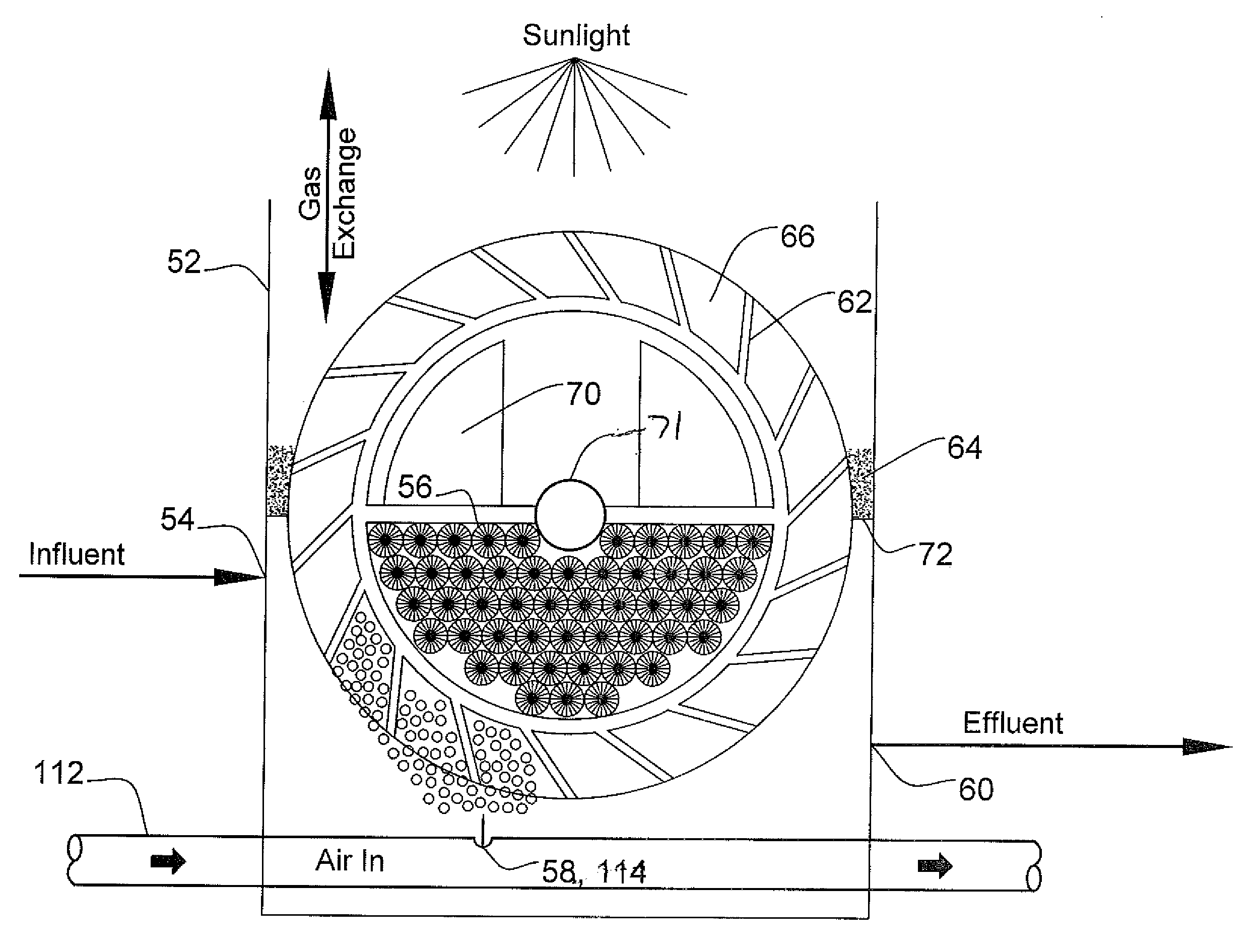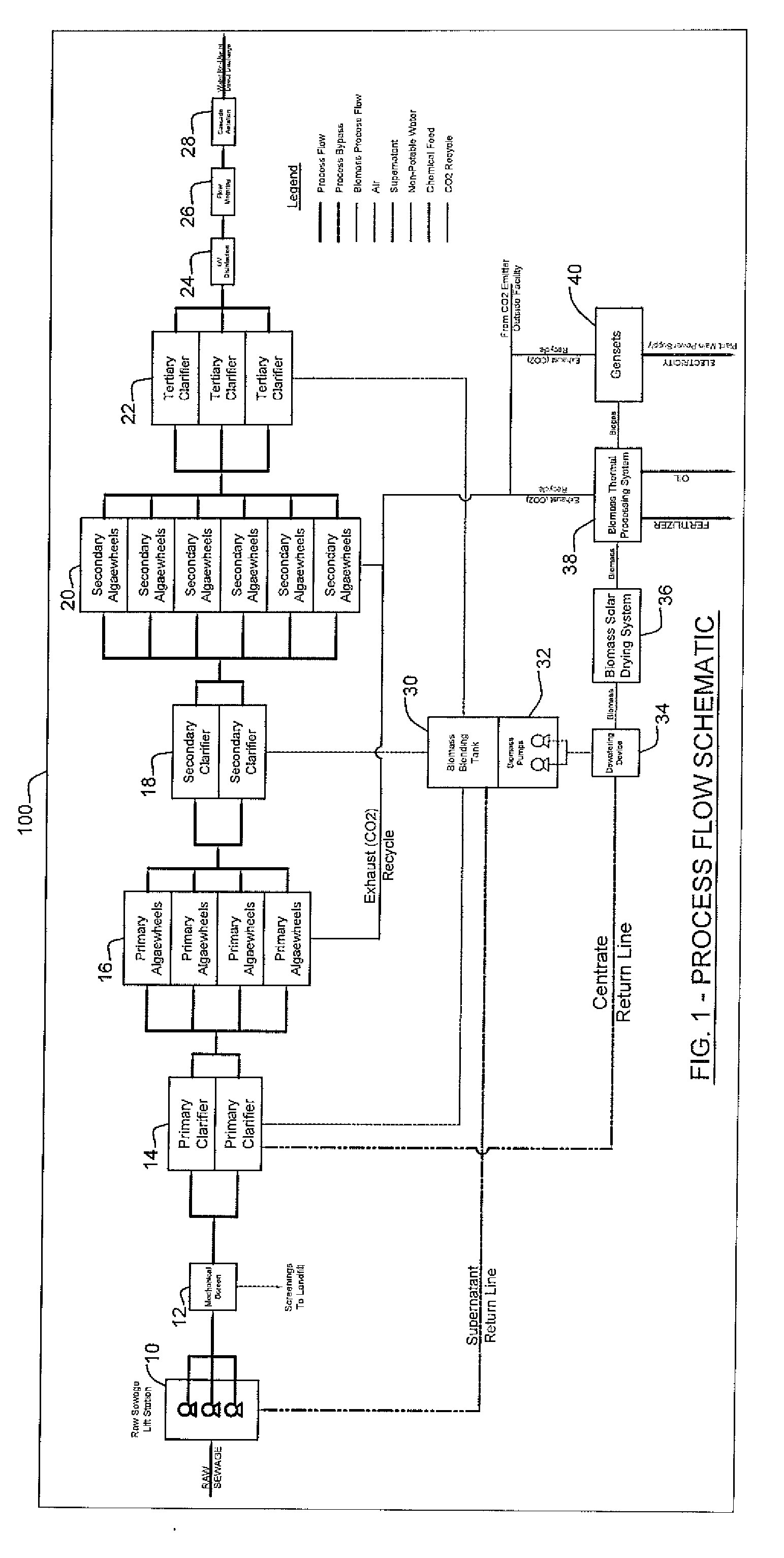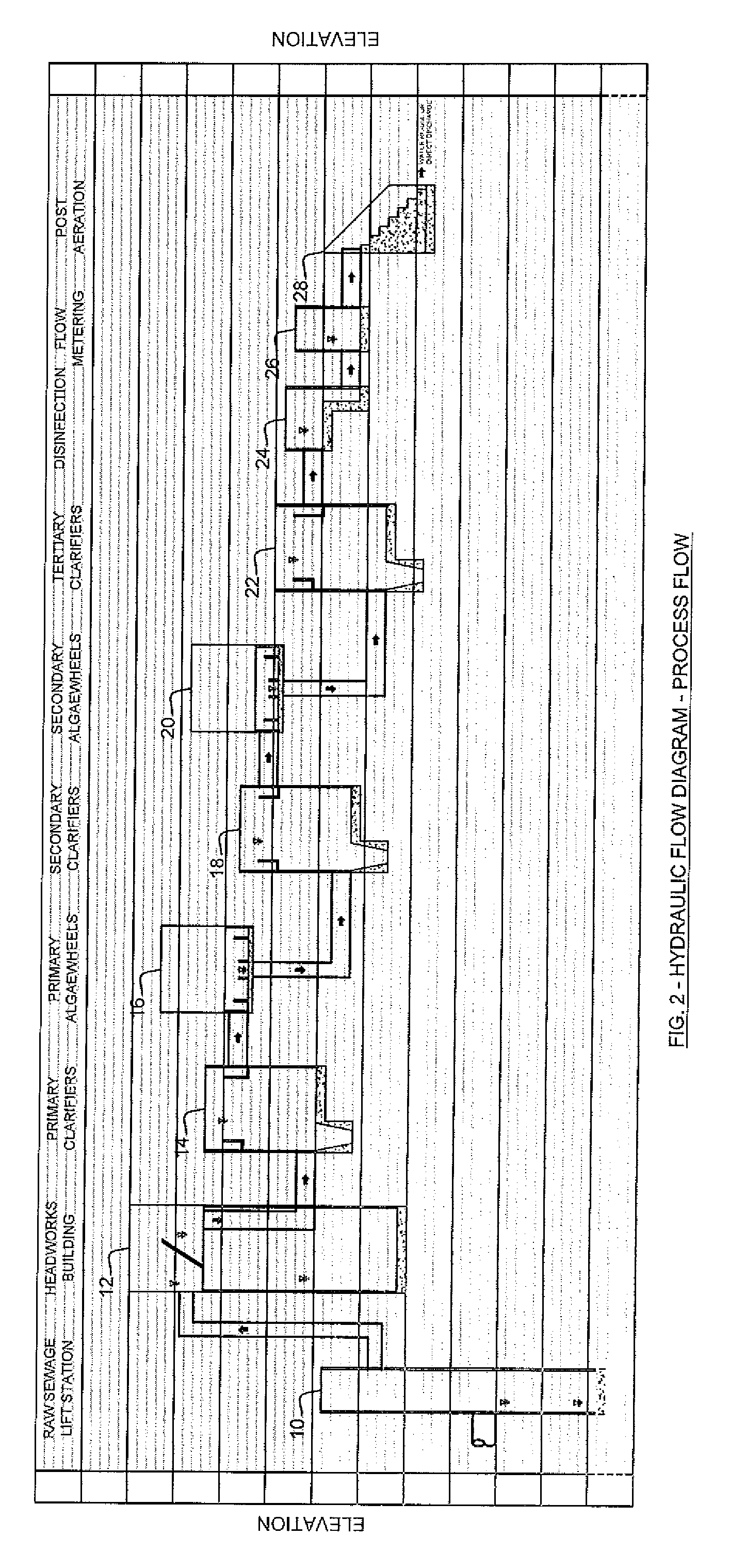Treatment processes now exist to meet these regulations, but the methods create significant GHGs, and are complex, expensive and energy intensive.
Obviously, that is not the case today.
In addition to
activated sludge and bio-film systems, there are over 5,100 pond type wastewater treatment systems in the U.S. The
energy requirement for pond systems is typically lower at 0.4-1.4 MWh per MG but these types of systems are not capable of meeting current direct
discharge regulatory requirements.
Pond systems also require large amounts of land and have large carbon footprints because they generate
methane from
anaerobic digestion in the bottom of the ponds.
For this reason, some regulatory agencies will no longer allow these types of systems at all.
Bio-film systems are not capable of efficiently growing algae or phototrophic
bacteria because of mechanical problems and clogging.
The
sludge handling at conventional WWTPs is extremely energy intensive, requires chemicals for
dewatering and
sludge stabilization, and uses fossil fuels to process and transport the
sludge for final disposal.
The main problem with pumping CO2 underground is that the energy requirements make this approach impractical to implement.
Another problem is the risk that the gases will escape to the surface.
We have no idea what the future consequences of such actions would cause.
However, these
alternative energy sources cannot cost effectively and reliably produce
electricity and do not appear to have the near-term capability of satisfying the need for
petroleum-type fuels—i.e.,
gasoline and diesel fuels.
Of course, one significant limitation of this technology is that it is tied to a source of waste CO2.
Another detriment is that this proposed technology requires a large
raceway pond, and ultimately a large amount of dedicated land in order to support enough algae to accept the waste CO2 and to produce a meaningful amount of algae for
biofuel production.
The
large size of the pond also means that the useful “season” is limited in certain locales and climates due to freezing of the pond.
There currently are no algae production systems in the world that can replace a conventional
extended aeration system and achieve the same level of treatment.
Some algae production systems have been proposed on WWTP
effluent but that provides little benefit to the treatment
plant owner because the wastewater has already been cleaned.
In fact, it creates a major liability and risk to the owner because of the potential re-
contamination with algae solids with certain types of algae production systems.
High rate algae ponds have been used for wastewater treatment but pond systems are not capable of meeting current regulatory
discharge requirements and require very large amounts of land as compared to mechanical WWTPs.
One reason why current algal production systems cannot be used to treat wastewater is due to the fact that algae cannot use organic carbon as a
carbon source.
Current algae production systems lack a bio-media component to provide the growing means for the bacteria required for this conversion to take place.
Another problem with growing algae in any kind of pond is that only in the top ¼ inch or so of the water does the algae receive enough solar
radiation.
Thus, the ability of the pond to grow algae is limited by its surface area, not by its volume.
In addition, the lagoon systems were prone to algae blooms that would overrun and clog the systems.
These limitations led to the development of the algae raceway in the 1970s.
One significant detriment of the algae raceway is that it requires a large surface area for adequate
exposure to
sunlight.
In addition, the raceway requires a shallow
water level to function, which inherently limits the volume and flow of wastewater that can be treated by any particular raceway facility.
Still another problem with ponds and raceway systems is
predation by animals and insects.
The larvae of some insects feed on the algae and can consume the entire
crop of algae almost overnight.
One of the disadvantages of closed bioreactors is that as the algae increases in the container, the uniform light distribution throughout decreases due to the light being absorbed by the algae.
The outermost layer of algae in the reactor get too much light and the inner layer of algae do not have enough light.
Algae also produces organic compounds that coat the closed
bioreactor and slowly reduce the ability of light to penetrate the
bioreactor.
The
bioreactor material has to be either cleaned or replaced increasing operation and replacement costs.
Currently proposed closed bioreactors cannot be used with typical exhaust blowers found at
coal plants due to the
water depth of the reactors which creates too high of a pressure head for the blowers to pump against.
Still another problem in
closed loop bioreactors is gas buildup.
Since the reactors are completely closed and CO2 is being compressed into the growing container, gas concentrations can build to levels that are toxic to the algae and that are detrimental to the equipment.
Another problem with
closed loop bioreactors is the amount of energy required to move the water through the system, especially the vertical algae growing systems.
This is essentially the same problem
ethanol plants have encountered by consuming more energy than energy produced.
Heat buildup is another problem with
closed loop bioreactors.
Ultimately, closed loop bioreactors are poor substitutes for conventional wastewater treatment processes.
 Login to View More
Login to View More 


